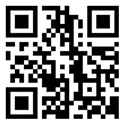Fastener product knowledge
Date: 2017-10-18Popularity:1780
Fasteners are used for fastening connection with a class of mechanical parts, the application is extremely wide. Fastener features: variety specifications, performance purposes vary, and standardization, serialization, generalization of the high degree of. Therefore, some people have the country (industry) standard class of fasteners called standard fasteners, referred to as standard parts.
Due to the specifications, size, tolerances, weight, performance, surface conditions, marking methods, and acceptance requirements for inspection, marking and packaging of each specific fastener product, it is specified in several national (industry) standards , Such as British, German and American.
Fasteners are the most widely used mechanical foundation pieces. With China's accession to the WTO in 2001 and entered the ranks of international trade power. China's fasteners a large number of products exported to countries around the world, the world's fastener products are also constantly influx of the Chinese market. Fasteners as one of China's large imports and exports of products, to achieve international standards, to promote China's fastener enterprises to the world, to promote the full participation of fastener enterprises in international cooperation and competition, have an important display and Strategic significance.
A fastener is a generic term for a class of mechanical parts that are used when two or more parts (or components) are fastened together. Also known as standard parts on the market.
It usually includes the following 12 categories of parts:
1. Bolts: A fastener consisting of a head and a screw (with an external thread) is required to be fitted with a nut for fastening the connection of two parts with through holes. This type of connection is bolted. If you remove the nut from the bolt, there are two parts can be separated, so the bolt connection is a detachable connection.
2. A type of fastener that has no head and only the ends that are threaded at both ends. When connected, it must be screwed into the part with internal screw holes, the other end through the part with the through hole, and then screw the nut, even if the two parts are tightly connected to see the whole. This type of connection is called a stud connection and is a detachable connection. Mainly used for one of the connected parts of a larger thickness, requiring a compact structure, or because of frequent demolition, should not be bolted to the occasion.
3. Screw: also by the head and screw two parts of a class of fasteners, according to the use can be divided into three categories: machine screws, set screws and special purpose screws. The machine screw is mainly used for a fastening screw hole part, with a through hole between the parts of the fastening connection, no need to match the nut (this connection is called the screw connection, also belong to the detachable connection; Used in conjunction with nuts for fastening connections between two parts with through holes.) The set screw is used primarily to hold the relative position between the two parts. Special-purpose screws such as rings are used for lifting parts.
4. Nuts: with internal thread holes, the shape is generally flat hexagonal prism, there are flat cylindrical or flat cylindrical, with bolts, studs or machine screws, used to fasten the connection of two parts, so that As a whole.
5. Self-tapping screw: similar to the machine screw, but the thread on the screw for the special tapping screw thread. Used to fasten the connection of two thin metal components, making it as a whole, the components need to make small holes in advance, because of this screw has a high hardness, can be directly screwed into the hole in the component, Forming a responsive internal thread. This connection is also a detachable connection.
6. Wood screw: Also similar to the machine screw, but the thread on the screw for the special wood screw with a rib, can be directly screwed into the wood components (or parts), for a hole with a metal (or non-metallic) The parts are fastened together with a wooden component. This connection also belongs to the detachable connection.
7. Washer: the shape of a flat ring is a class of fasteners. Placed between the support surface of the bolt, the screw or nut and the surface of the connecting part, to increase the contact surface area of the connected part, to reduce the pressure per unit area and to protect the surface of the connected part from being damaged; another type of elastic washer, But also play a role in preventing the nut from loosening.
8. retaining ring: for installation in the machine, the equipment of the shaft groove or hole, plays a block on the shaft or hole on the part of the role of moving around.
9. Pin: mainly for parts positioning, and some also for parts to connect, fixed parts, transmission power or lock other fasteners used.
10. Rivets: A fastener consisting of a head and a staple for fastening the parts (or components) connecting the two through-holes to make it integral. This type of connection is called rivet connection, referred to as riveting. Belong to non-detachable connection. Because the two parts that are connected together must be separated, the rivets on the part must be destroyed.
11. Assembly and connection pair: The assembly refers to a combination of fasteners, such as a machine screw (or bolt, self-supply screws) and flat washers (or spring washers, lock washers) in combination; A new type of fastener, such as a steel structure with a high strength large hexagon head bolts, which is a combination of special bolts, nuts and washers.
12. Punch: A heterogeneous fastener consisting of light and nail (or nail), which is attached to a part (or component) by welding so that it is connected to other parts.

 hotline
hotline